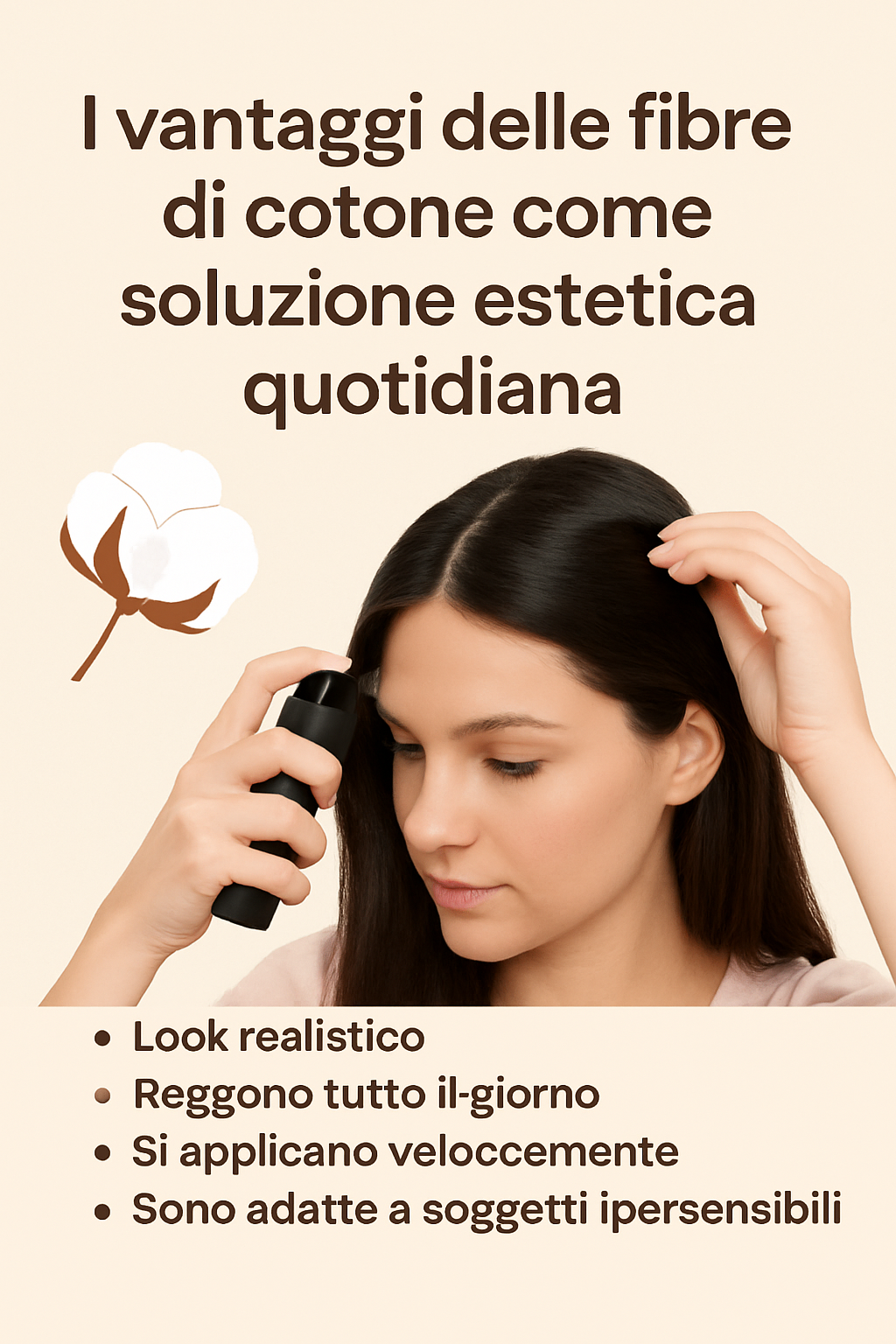Hair thinning signs, causes and remedies
How to recognize hair thinning and intervene in time with effective remedies.
Hair thinning is a progressive phenomenon capable of compromising personal aesthetics and the psychological well-being of every individual. It is crucial to recognize promptly the signs and intervene in a targeted way, preventing or slowing down such loss.
The causes can be various, from hormonal to those related to stress. Let's explore the topic further.
What hair thinning is and how to recognize it
Hair thinning is a condition characterized by the progressive reduction of hair density on the scalp. Unlike established baldness, where there is a marked and definitive loss of follicles, thinning is often gradual and initially localized in specific areas, such as the top of the head or the temples. This condition can affect both men and women, with different manifestations depending on sex and age.
The early signs of hair thinning are sometimes subtle. Among the most common are increased hair loss during washing or brushing, a visible reduction in hair thickness, loss of volume, and the appearance of scalp areas more visible in the light. In the initial cases, hair appears finer and more fragile, while in more advanced stages true gaps become evident.
Recognizing thinning hair at an early stage is necessary to set up an effective treatment path. Diagnosis is based on a thorough dermatological evaluation, possibly supported by instrumental tests such as the trichogram or dermatoscopy.
Main causes of thinning: hormones, stress, genetics
The causes of hair thinning are multiple and often interconnected. Among the most significant are hormonal, genetic factors and stress, which can act individually or synergistically.
Hormonal factors play a central role, especially in cases of androgenetic alopecia. This condition, influenced by the action of dihydrotestosterone (DHT), causes progressive miniaturization of hair follicles, resulting in the production of increasingly thin and short hair. In women, hormonal thinning can be associated with imbalances related to menopause, polycystic ovary syndrome, or the use of oral contraceptives.
Genetics is another determinant to keep under control; indeed, those with a family predisposition to hair loss have a higher risk of developing early or accentuated thinning. In these cases, the pattern of loss may follow recurring schemes, often recognizable already at a young age.
The analysis of the main causes of baldness can also lead to physical and emotional stress. A telogen effluvium (a process of transient increased hair loss) could be caused by traumatic events, serious illnesses, periods of intense psychological load, and surgical interventions.
How to prevent and slow down hair thinning
Prevention of hair thinning involves a set of strategies aimed at preserving the health of the scalp and follicles. A balanced lifestyle, proper nutrition, and the use of suitable products form the basis of every preventive program.
A diet rich in micronutrients is essential, prioritizing proteins, omega-3 fatty acids, iron, zinc, and B vitamins (especially biotin), for the correct hair growth cycle. Supplementation should be evaluated case by case by a doctor, based on any deficiencies highlighted by blood tests.
It is advisable to use gentle shampoos, formulated for frequent use and free of harsh sulfates. Regular cleansing prevents the accumulation of sebum and dandruff, two factors that can clog follicles and worsen the situation. It is also appropriate to avoid excessive use of thermal tools, including high-temperature straighteners or hairdryers.
For those genetically predisposed or noticing the first signs of early hair thinning, it may be useful to use targeted preventive treatments under medical supervision, confirming the visible results of hair fibers.
Cosmetic, natural and pharmacological remedies
Addressing hair thinning requires a multifactorial approach, which can include cosmetic, natural, and pharmacological remedies, depending on the severity and underlying causes.
Cosmetic remedies include the use of volumizing products, keratin fibers to mask thinning areas, and stimulating lotions. Although they do not act on the cause, they improve the aesthetic appearance and psychological well-being of the patient. In professional settings, scalp peeling treatments or radiofrequency can promote microcirculation and follicular regeneration.
Natural remedies for hair thinning include essential oils (rosemary, lavender, or peppermint), scalp massages, and applications of aloe vera or amla. Although less powerful than clinical treatments, some of these remedies have shown, in preliminary studies, a fair effectiveness in improving follicle health.
On the pharmacological front, the best-known treatments include:
· Minoxidil: topical active ingredient with vasodilating action, stimulates the anagen phase of hair and prolongs its life. It is approved for both male and female use,
· Finasteride: oral drug with anti-DHT action, indicated for men. It reduces follicle miniaturization and slows the progression of loss;
· other specific supplements, formulated with sulfur amino acids, vitamins, and minerals, can support systemic treatment of thinning.
In the medical-aesthetic field, techniques such as microneedling, PRP (platelet-rich plasma), and mesotherapy are gaining popularity. These procedures stimulate follicles through controlled micro-injuries or injections of active substances directly into the scalp.
Each treatment must be personalized, avoiding do-it-yourself and relying on experts to prevent side effects or poor results.
When to consult a specialist
Hair thinning should not be considered solely an aesthetic issue, but rather a sign of physiological or systemic imbalances that deserve medical attention. Consulting a trichology specialist is recommended in several circumstances:
· when the loss is sudden or intense;
· if visibly thinned scalp areas persist;
· when worsening is noticed despite the adoption of home remedies.
A detailed trichological analysis allows identifying the type of alopecia, assessing its extent, and establishing an appropriate therapeutic plan. The specialist may also prescribe blood tests, hormonal ultrasounds, or skin biopsies in complex cases to exclude underlying pathologies.
For those who already have thinned hair, a dermatological consultation is recommended to avoid ineffective or overly harmful treatments. In advanced cases, the possibility of a hair transplant can be evaluated, nowadays performed with minimally invasive techniques and a natural appearance.



